Tbilisi, being the capital of Georgia is a vibrant bustling city. It has a fine mix of history & modernity. There are quite a few places to explore & things to do in Tbilisi. However, once you’ve spent some time in the city, you’ll want to travel to it’s outskirts.
There are a number of day-trips from Tbilisi to satisfy your streak of wanderlust. One of my favourites being – a day-trip from Tbilisi exploring Mtskheta and Uplistsikhe.
A DAY TRIP FROM TBILISI
One of the best day trips from Tbilisi features – exploring Mtskheta and Uplistsikhe. The places you’ll be covering are Jvari monastery, Svetitskhoveli cathedral and the Uplistsikhe cave-town.
—-> Book the Mtskheta and Uplistsikhe day trip from Tbilisi by clicking here.
MTSKHETA
At a distance of about 25 km from Tbilisi, is the sacred city of Mtskheta. Mtskheta is one of the oldest cities of Georgia. It was once the capital of the Georgian Kingdom of Iberia which is basically eastern part of Georgia. Mtskheta sits at the meeting junction of two famous rivers – Mtkvari and Aragvi.
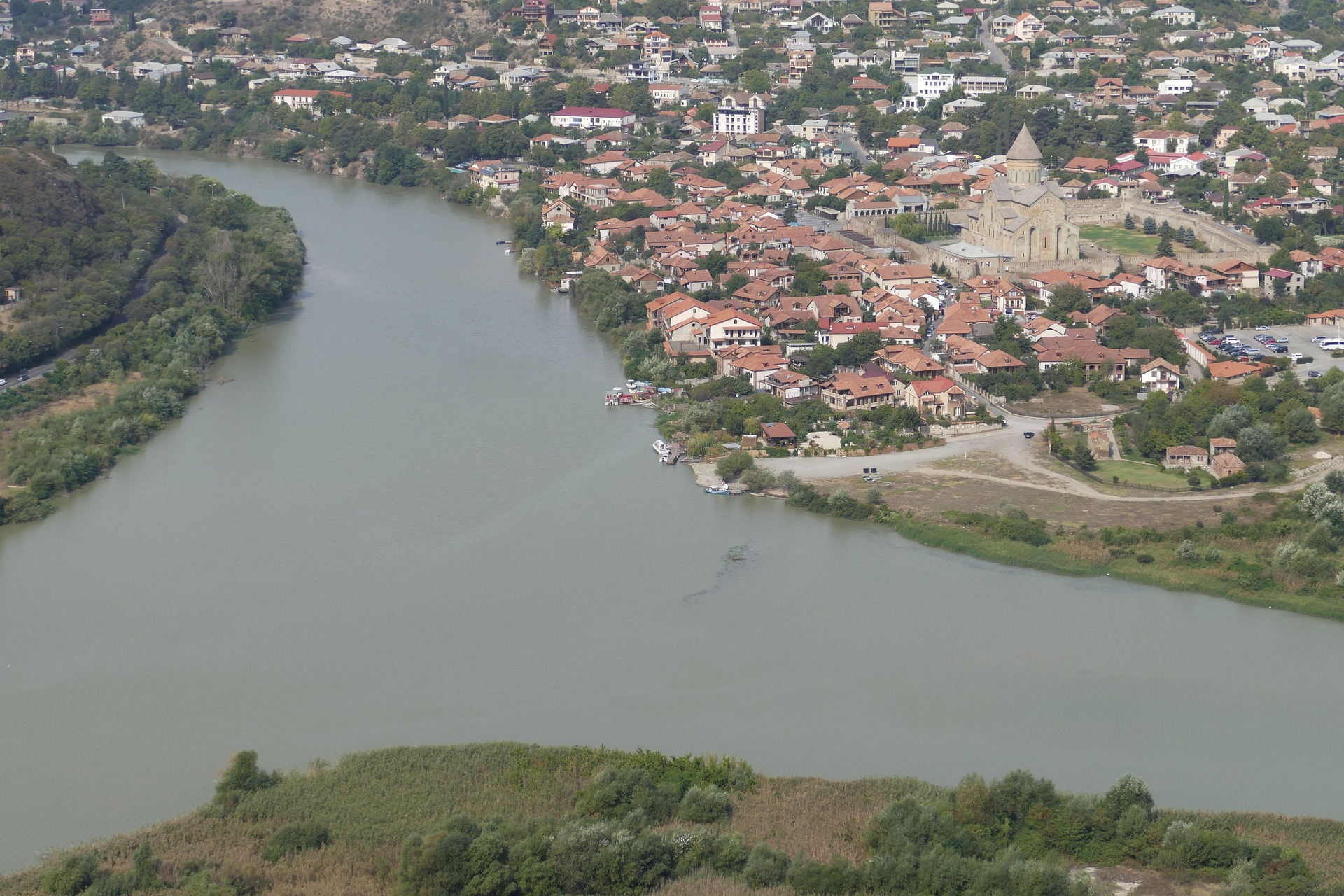
They say that Christianity was born here and consequently adopted as the state religion. Since all Christian activities originated from here, it was conferred the title of the “Holy City” by the Georgian Orthodox Church. It is a UNESCO World Heritage site at present.
Because of it’s proximity to the rivers, it was an important trading stop for all traders. However, with shifting of the capital to Tbilisi, Mtskheta became much more laid back with a calm and rustic feel to it. This place is a must-do if you’re doing a day-trip from Tbilisi.
WHY VISIT MTSKHETA – HOW TO GO – WHAT TO SEE
Firstly, you get to experience the surreal natural beauty, great architecture and a rich religious heritage in Mtskheta. Secondly, it has a number of restaurants & cafes which serve delicious traditional Georgian food & drinks at economical prices. And finally, the climate here is pleasant during the majority of the year which makes it a traveller’s delight.
You can easily book a private cab from Tbilisi with the help of your hotel reception, as it’s only a half-hour drive to Mtskheta.
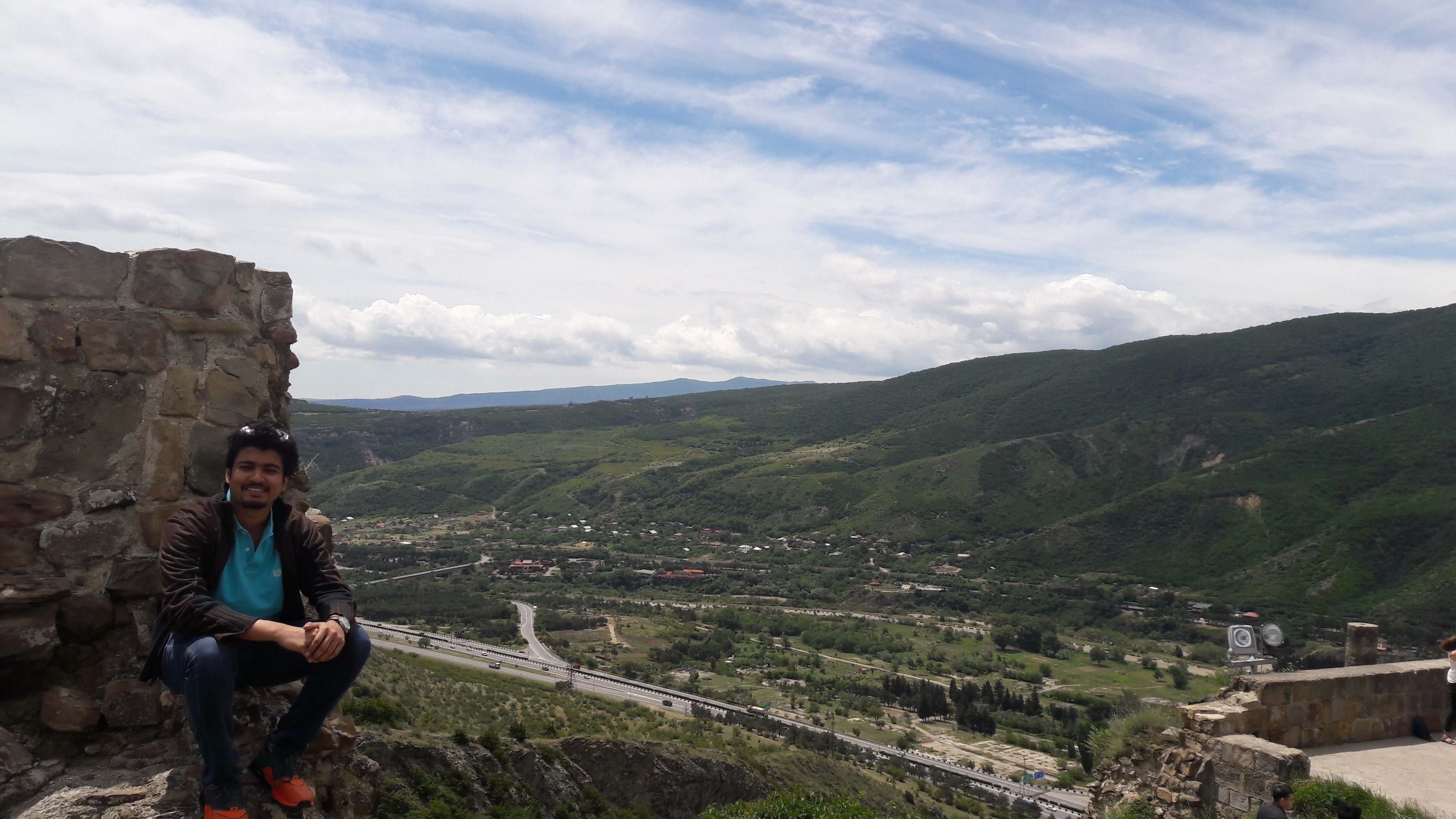
If you prefer to travel by bus, then you can take a Marshrutka (minibus) for 1-2 GEL (for a return ticket) at Didube bus station. You also have the option to book a tour or day trip in advance for an organized guided experience (which I opted for).
The 2 main sites to visit in Mtskheta are Jvari Monastery & Svetitskhoveli Cathedral. Not only do they provide us with a proof of the golden phase of Georgian architecture but also give us an idea of the village life and the natural scenic beauty that surrounds them.
Therefore, if you’re doing a day trip from Tbilisi to Mtskheta, then these places have to feature in your list.
JVARI MONASTERY
Jvari monastery translated as “Monastery of the Holy Cross” is one of the most stunning monasteries I’ve ever seen.
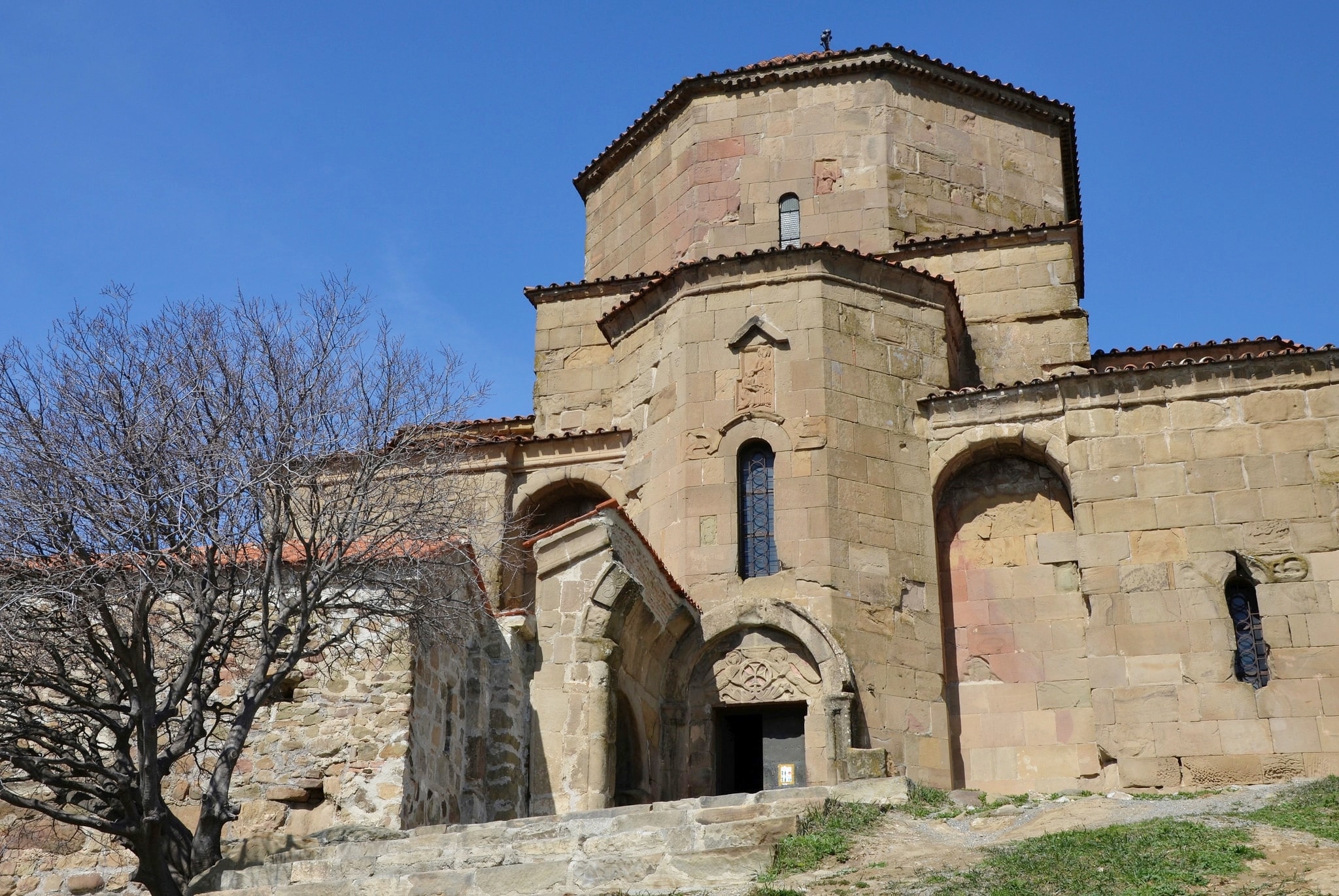
I make that statement not only because of it’s intricate classical Georgian architecture but also because of it’s picturesque location.
It’s located on a mountain-top that overlooks
- The confluence of two rivers – Mtkvari and Aragvi &
- The town of Mtskheta
Which makes posing at this paradisiacal place look like this.
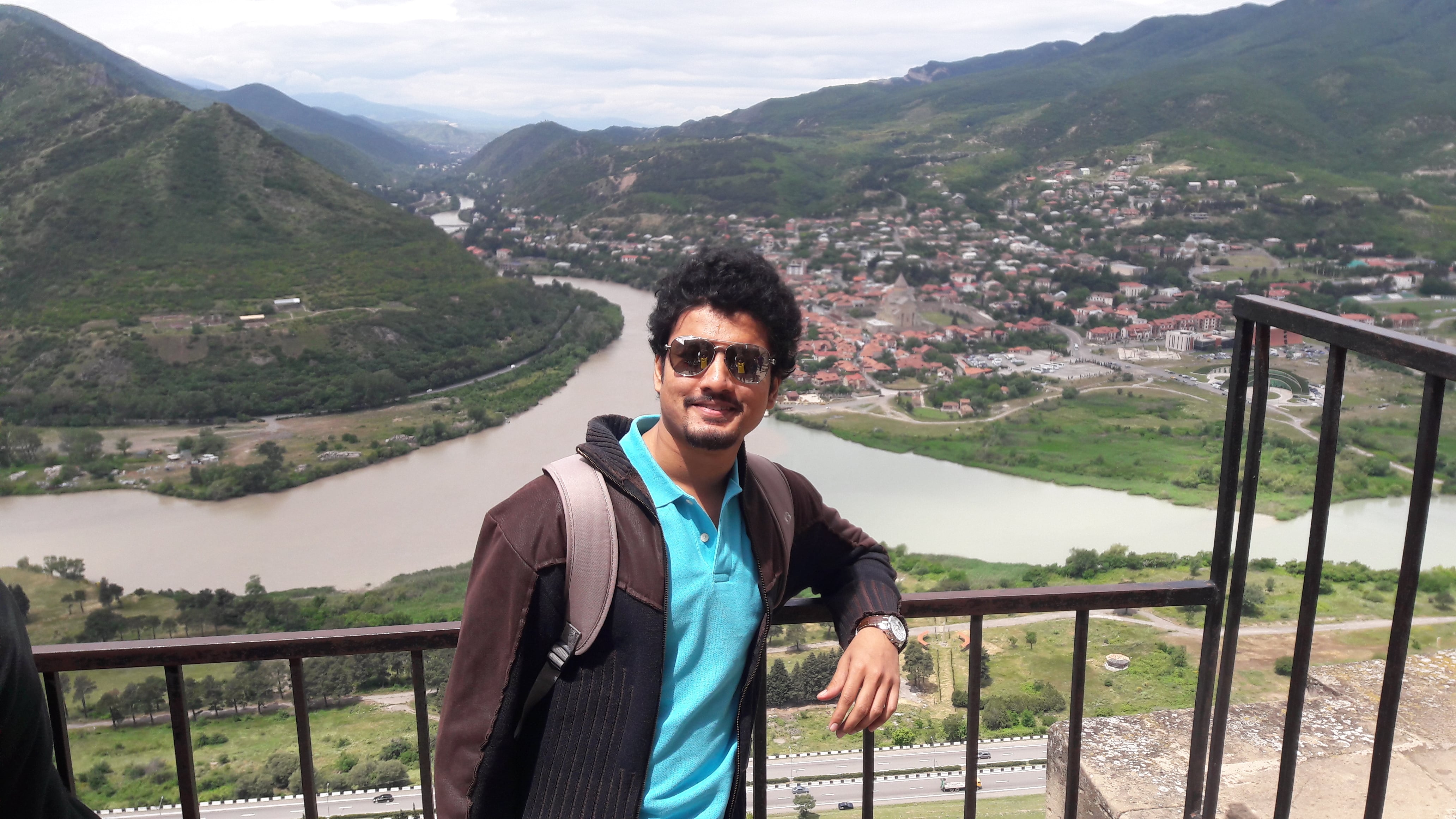
It was listed as a UNESCO World Heritage site in 1994. Apparently, this was once a Pagan temple. But when Saint Nino from Cappadocia converted the King of Iberia to Christianity in the early years of the 4th century, a large wooden cross was erected on the site of the pagan temple. It symbolised the end of Paganism & adoption of Christianity by Georgia.
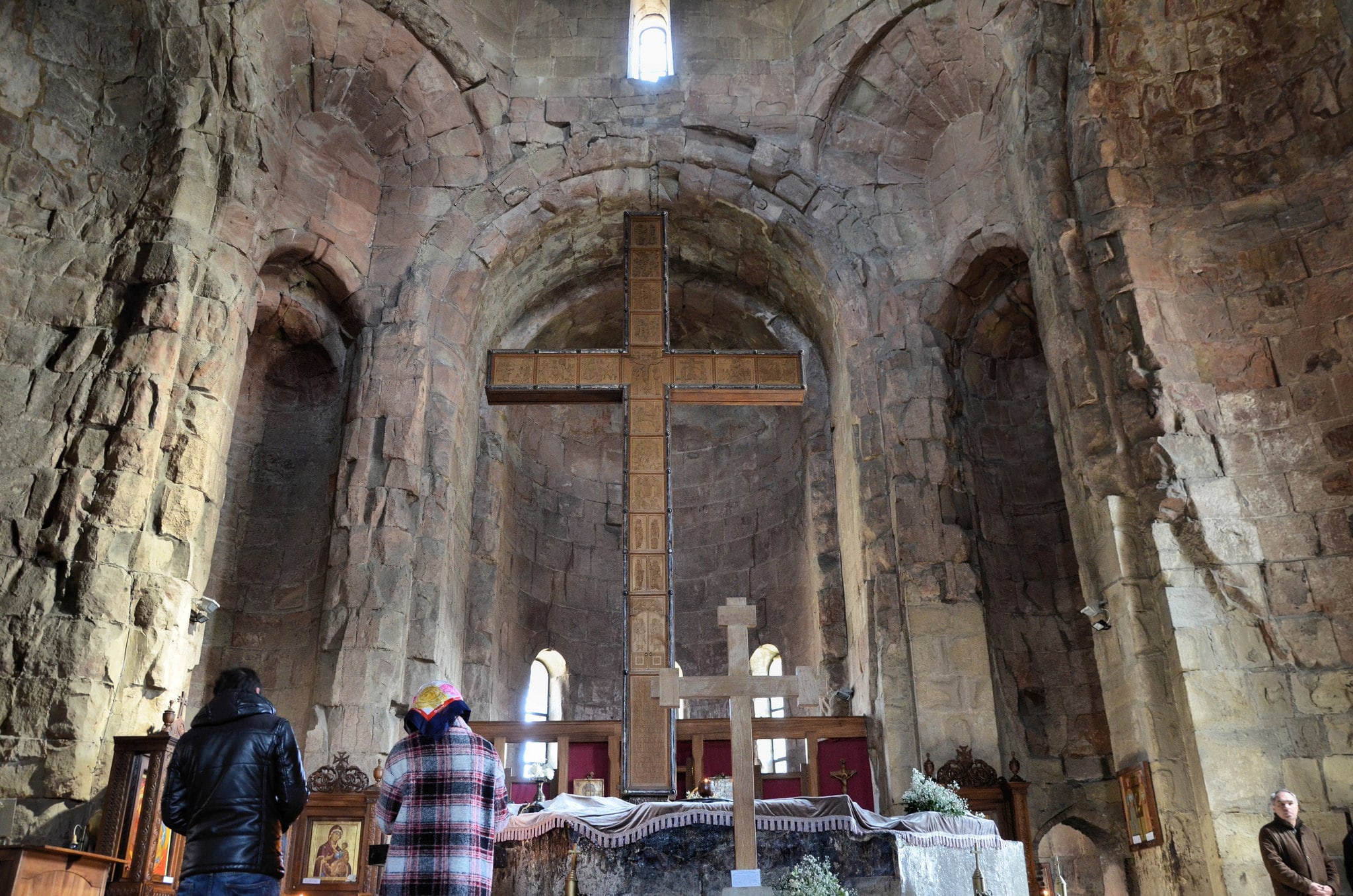
The Cross turned out to be miraculous and brought about good luck. As a result, the site attracted pilgrims from all over the Caucasus. A small church was built at the site in 545 which was then transformed into a bigger church, built between 590 and 605 by Erismtavari Stepanoz I.
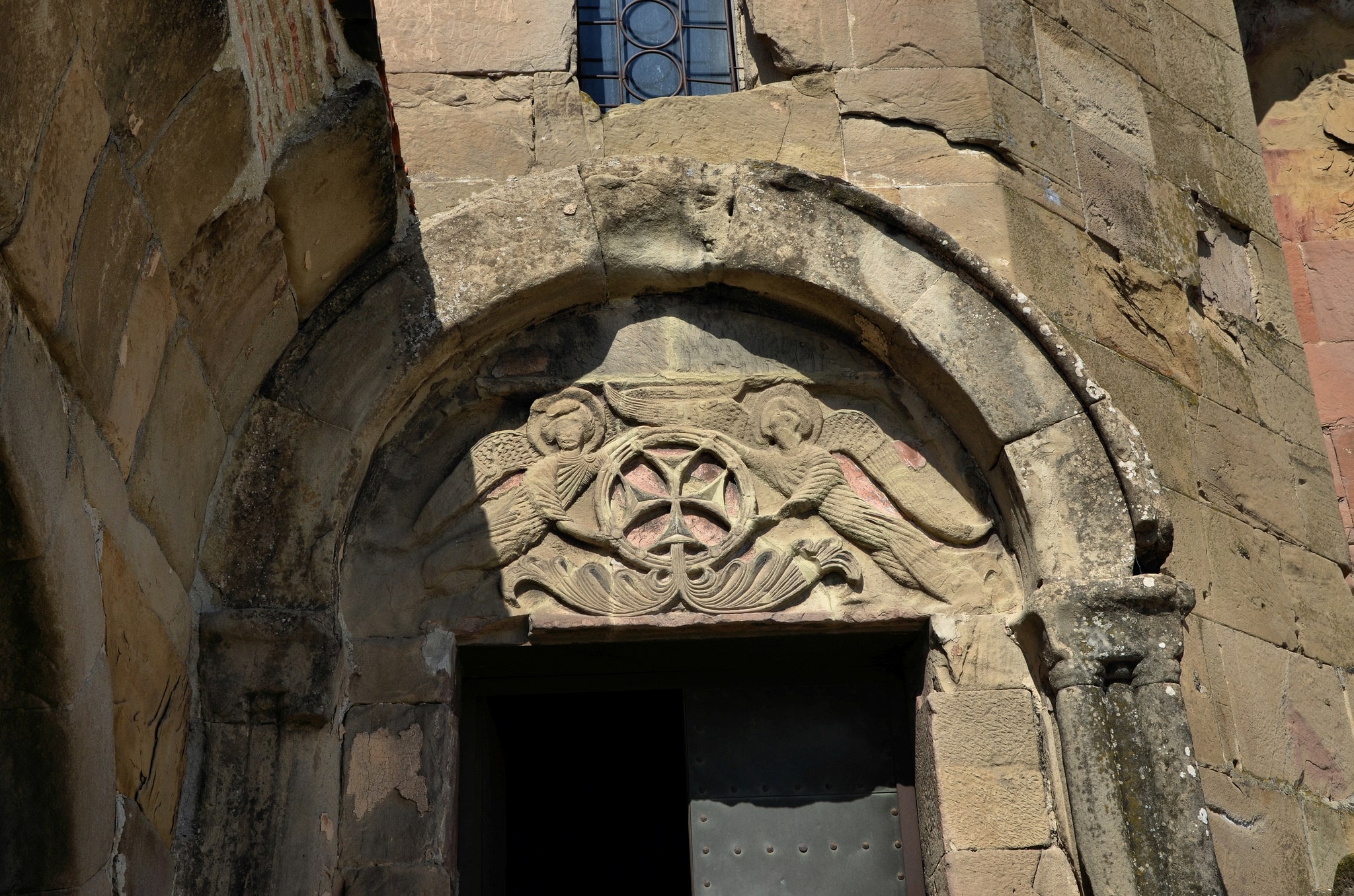
The main Monastery building has an octahedral dome with the outer facades decorated with bas-relief structures. Inside the church, you’ll see the Big Sacred Cross fixed on a foundation along with paintings of Saints on walls.
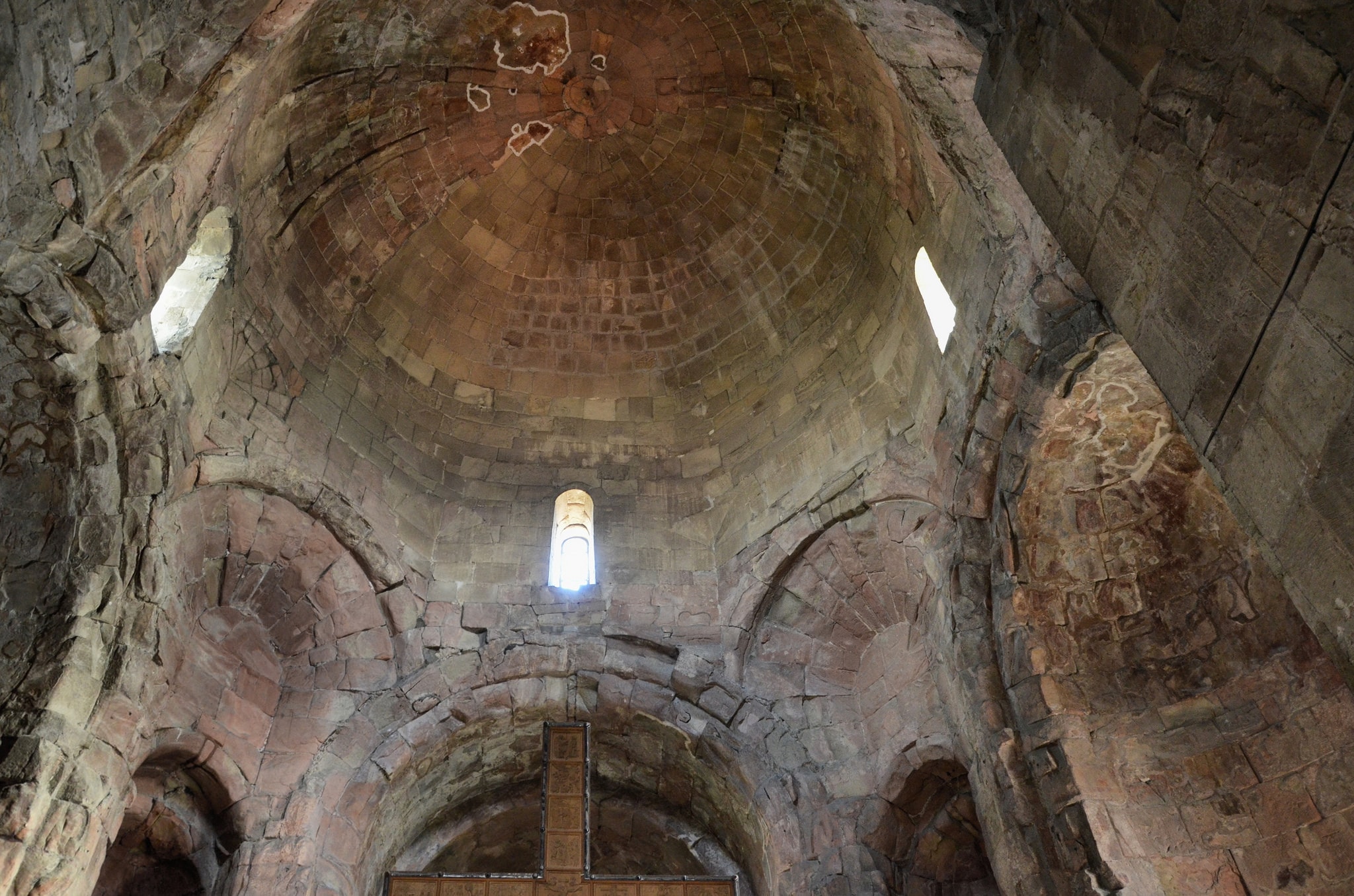
You’ll notice that the mosaics inside are survived only in fragments and the frescoes, the roof is a bit damaged because of the rains, wind erosion and poor maintenance. Therefore, the monastery was listed in the World Monuments Watch List in 2004.
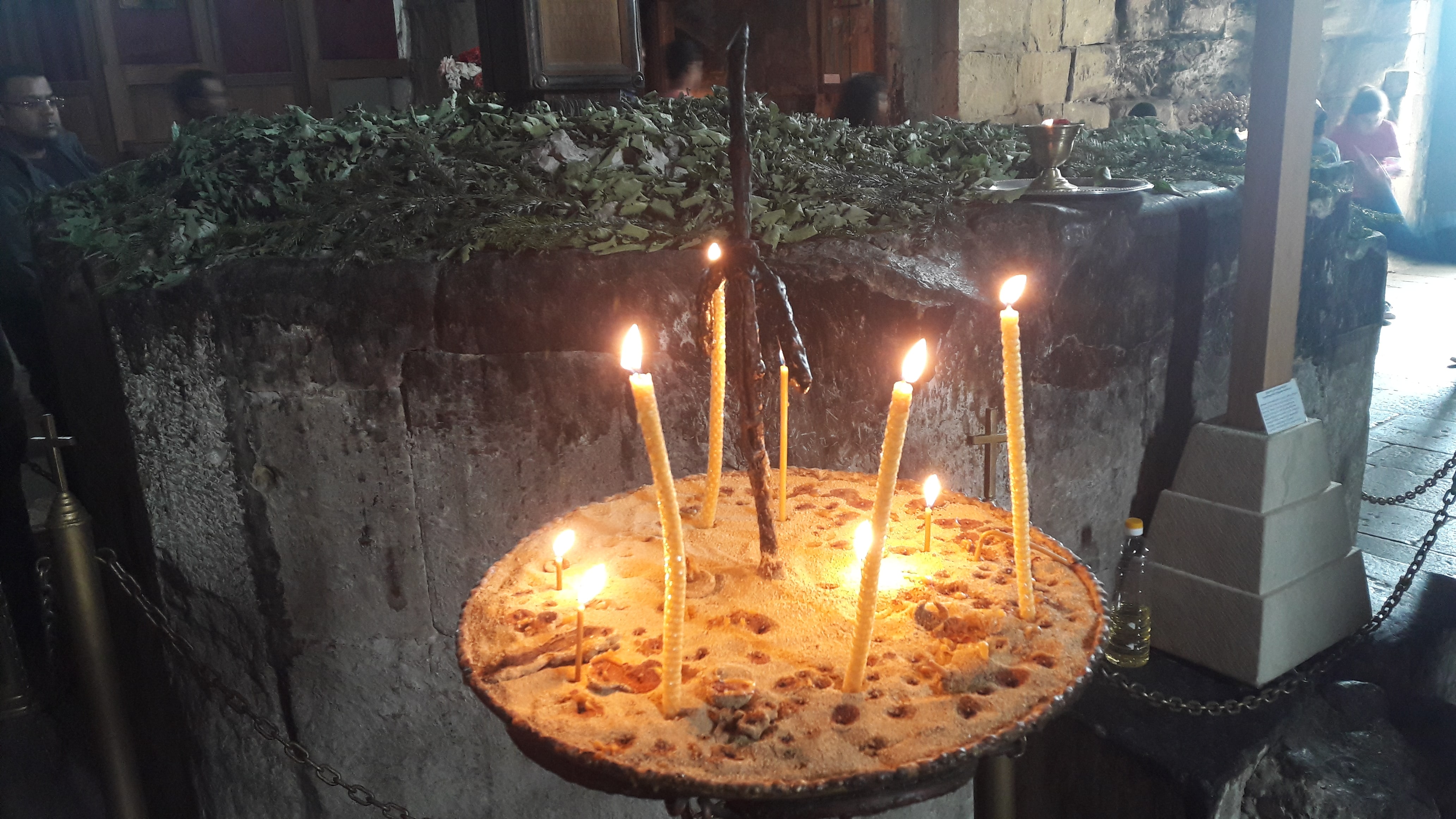
But that doesn’t take away from a brilliant classical architecture which formed the blueprint for the construction of many other churches in Georgia. Major celebrations still take place at this sacred site. I specifically loved the large patches of greenery outside the monastery where you can sit, enjoy the cool breeze and spend time admiring the beauty of the place.
The monastery is 15.6 from Mtskheta, 25 km from Tbilisi and 16.3 km from Svetitskhoveli cathedral.
NOTE: Entry to the venue is free. You’re expected to cover your bare legs and heads (for women) as a mark of respect. Scarves are available at the entrance to borrow.
SVETITSKHOVELI CATHEDRAL
Also known as the “Cathedral of Living Pillar”, Svetitskhoveli (difficult to pronounce the first 100 times) Cathedral is one of the principal Georgian Orthodox churches. It’s a magnificent structure surrounded by primitive homes in the village with green hills in the backdrop.
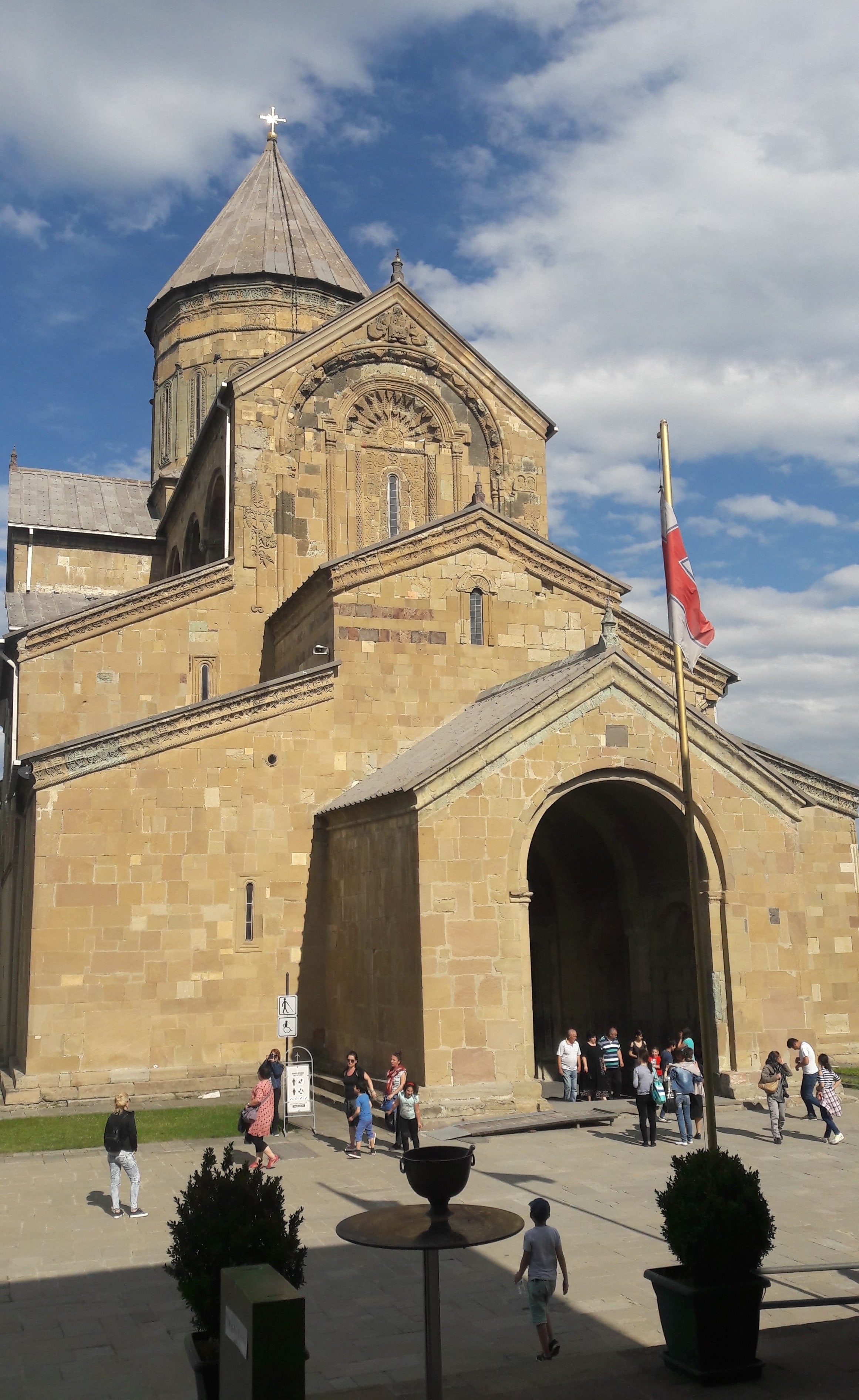
It’s built on a site which St. Nino had chosen as the place for the first church in Georgia – the Twelve Apostles Church. The cathedral was built in 11th century (1010-1029) by Georgian architect Arsukisdze. Because it’s an extremely sacred site, many people baptize their kids or get married over here.
A pleasant little walk through many local stores (mainly touristy) leads to the compound where you see this cathedral. The cathedral is a masterpiece of Georgian architecture & is recognised as a UNESCO World Heritage site. It’s the second largest church in Georgia after the Holy Trinity Cathedral of Tbilisi.
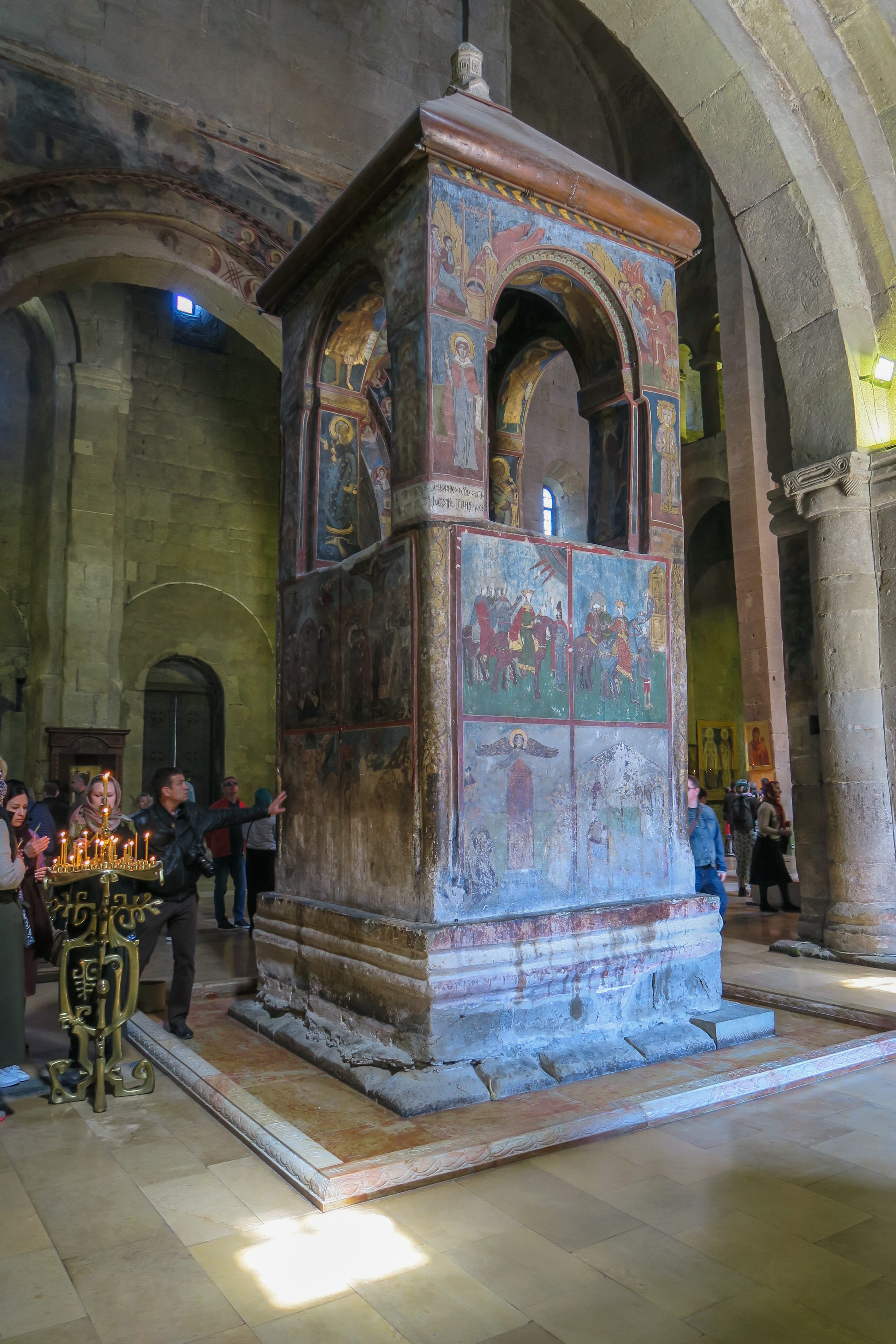
If you were missing a dash of magic & surrealism in this day-trip from Tbilisi, then the story behind the origin of this cathedral will provide you exactly that. My guide George shared a famous legend with respect to the cathedral’s origin –
- Once there was a person named Elias who lived in Mtskheta. He had apparently found the Tunic (a Greek robe) of Jesus Christ in Jerusalem post his crucifixion, which he brought back to Georgia with him.
- He had a sister named Sidonia who died as soon as she touched the tunic. She was buried wrapped in that garment.
- After a few years, a cedar tree had grown on her grave. The then ruler Mirian decided to build a church where the sacred tunic was buried so he ordered the cedar tree to be cut down.
- Seven columns were made from the cedar tree for the foundation of the church. This was under St. Nino’s supervision.
- Six columns were in place but the seventh one hung mid-air.
- After St. Nino prayed all night, it miraculously landed on Earth and started secreting a magical potion.
- Because this potion had healing properties, it healed many people of incurable diseases. As a result, the column (pillar) came to be known as “Life-giving pillar”.
Sveti means pillar and tskhoveli means life-giving in Georgian and hence, it’s the name of the cathedral. The architecture is cross-dome style with well-maintained paintings on walls.
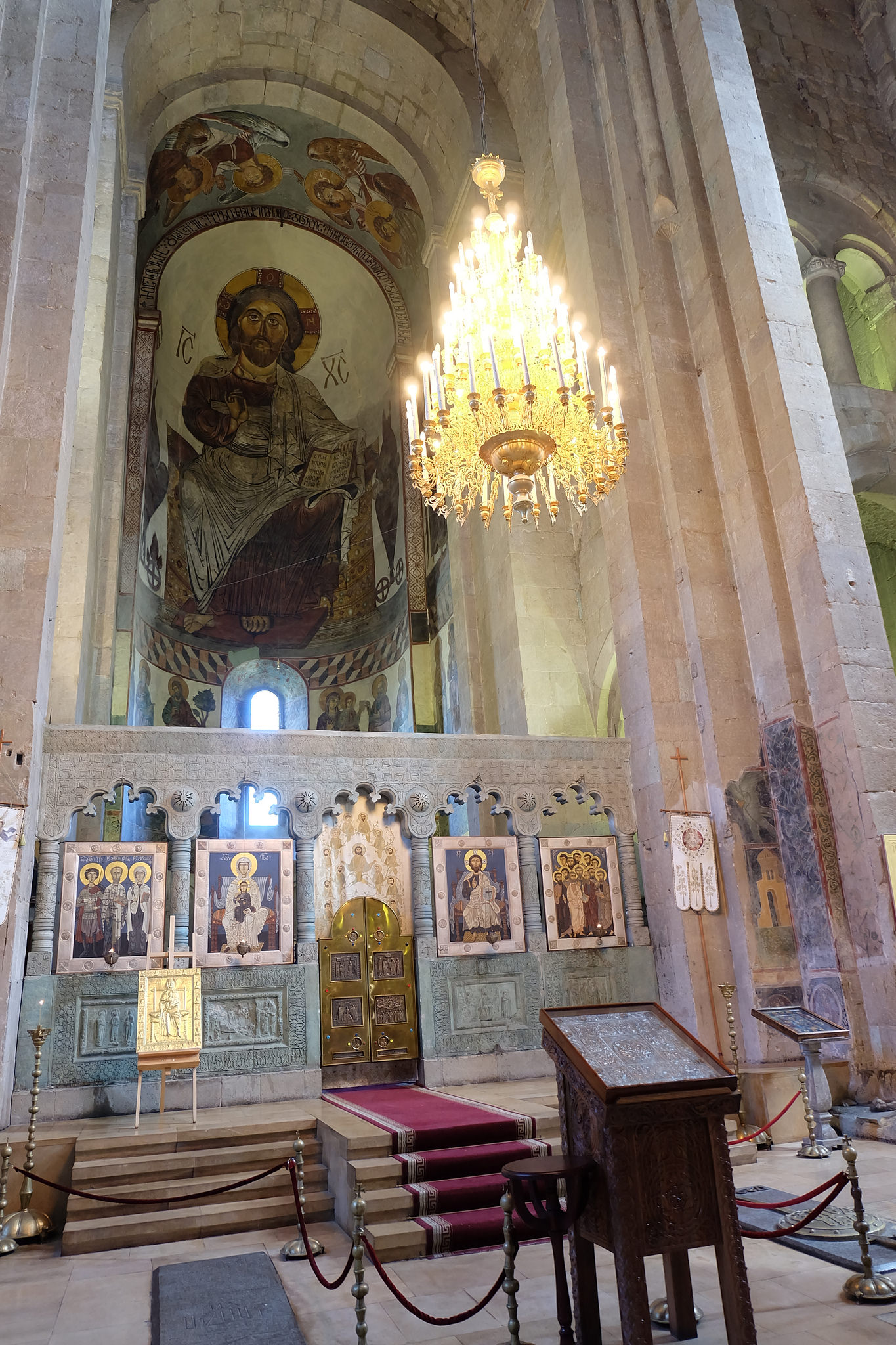
My favourite part of the cathedral, however, was the huge fresco of Jesus Christ behind the altar. An array of wonderful icons and frescoes can be seen inside.
The acoustics of the cathedral is truly one of a kind and being an inquisitive mischief monger, I did try to hear my echo as the place was not that crowded. The sight of the choir of men singing with sunlight entering the cathedral was a cinematic and stunning visual. I was lucky enough to witness it.
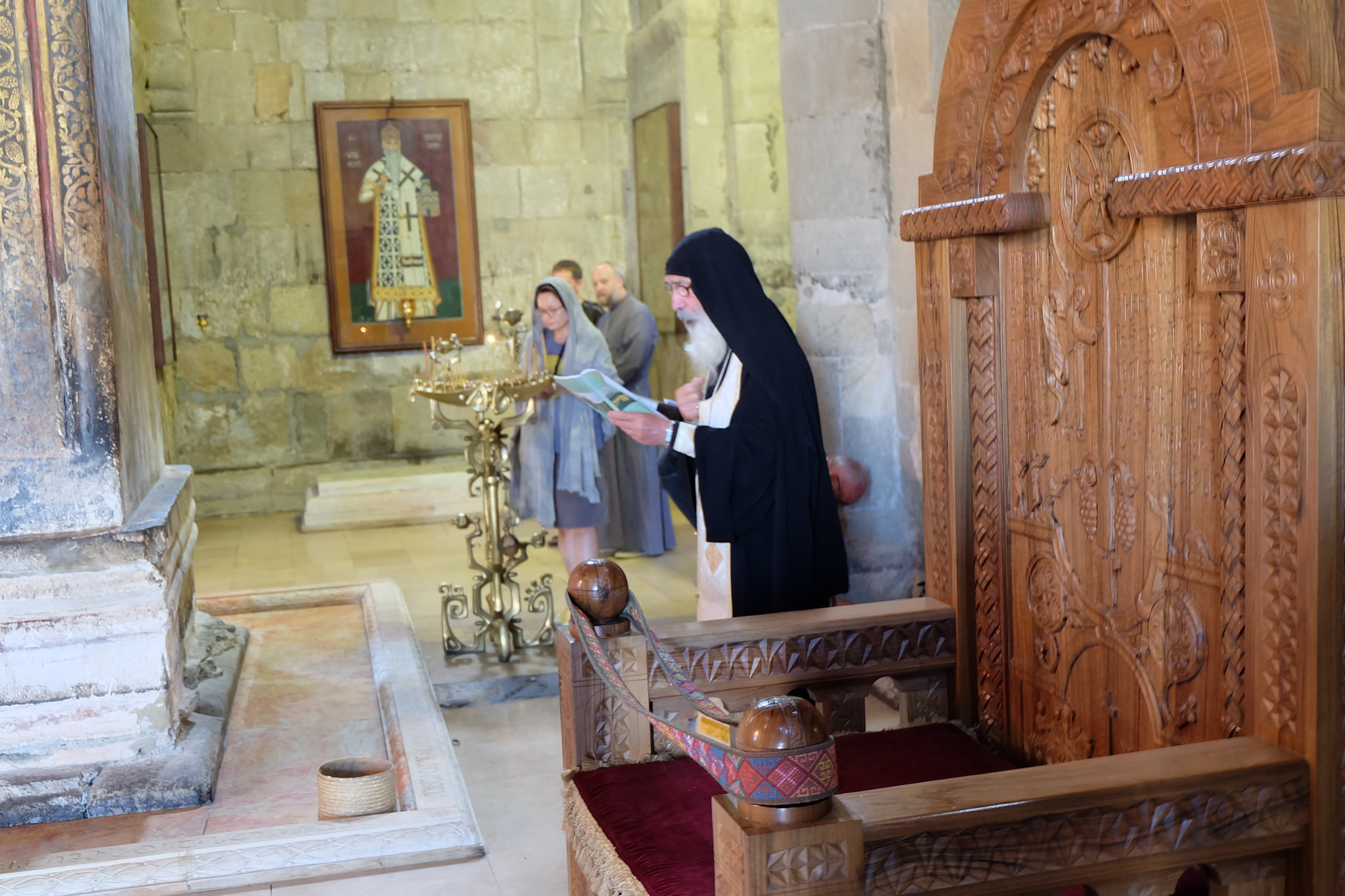
Spending time admiring various icons in the cathedral & being a part of a sermon was an overwhelming experience.
There are food and juice stalls in the external compound as well. Do have some fresh fruit juice here like orange/pomegranate. It might be a bit expensive but totally worth the taste.
The cathedral is 1.5 km from Mtskheta, 26 km from Tbilisi and 12.3 km from Jvari monastery.
NOTE: Entry to the venue is free. You’re expected to cover bare legs and heads (for women) before the entrance. Scarves and covering clothes are provided.
UPLISTSIKHE CAVE TOWN
This place was one of the highlights of my day-trip from Tbilisi. I’d never been to a “cave-town” previously, so Uplistsikhe obviously had the novelty factor in it’s favour. Situated 10 km to the east of Gori city, this cave town is one of the oldest settlements in Georgia. The name of the rock-cut town translates to “The Lord’s fortress”.
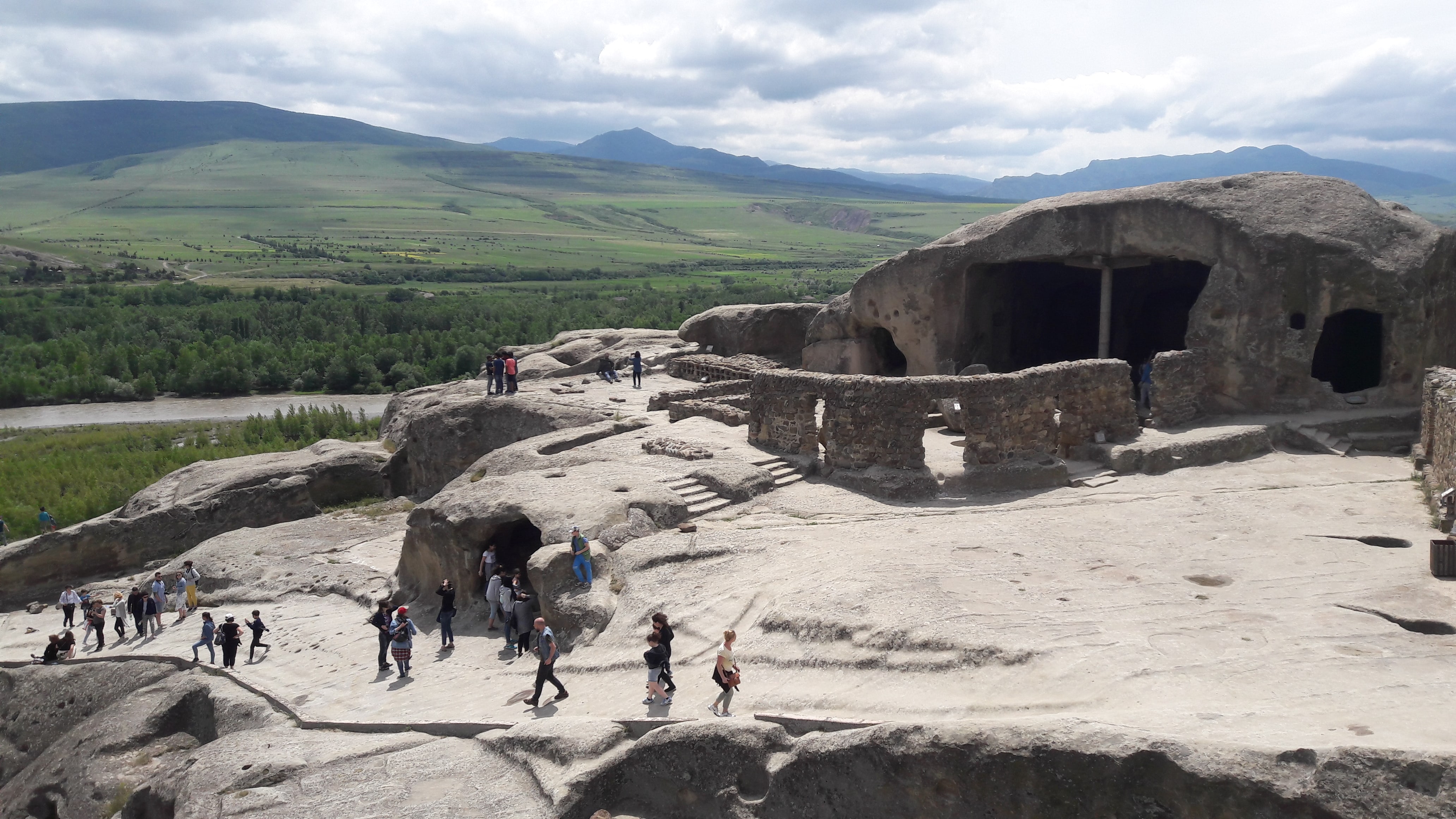
The cave town has a history that dates back to 2nd century BC. It was once the centre for Pagan worship in the ancient kingdom of Iberia and played a major role in the political and religious activities of that time.
The signs of Pagan worship can even be seen in the various temples & rock structures (dedicated to Sun Goddess) unearthed from archaeological excavations.
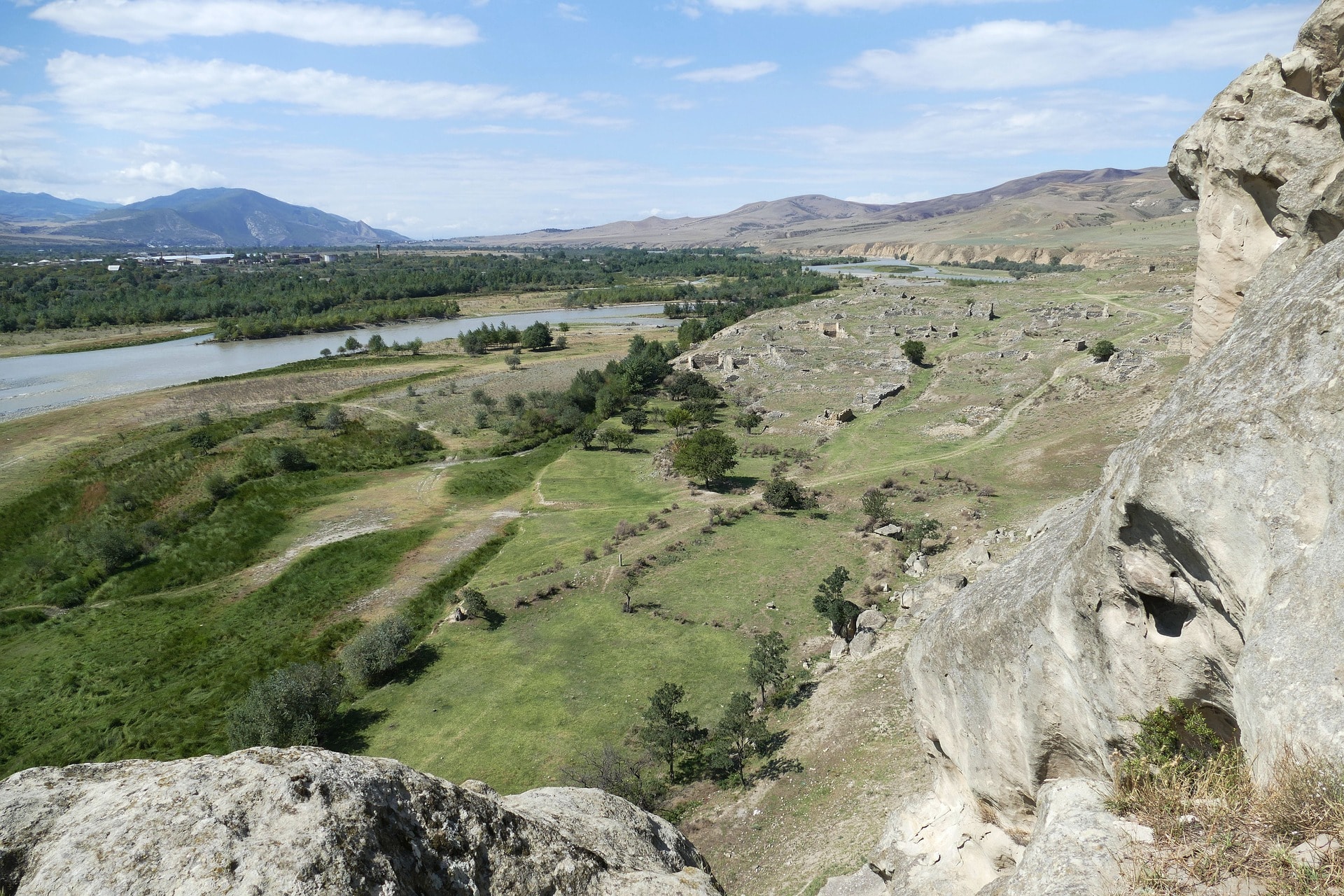
The place lost it’s importance during the Christian era in the 4th century with Mtskheta and Tbilisi assuming importance. But with Arab conquests in the 8th-9th century period, it regained it’s importance by becoming an important Georgian fortress.
However, the cave town went into oblivion after the Mongol invasions that occurred during the 12th-13th century period.
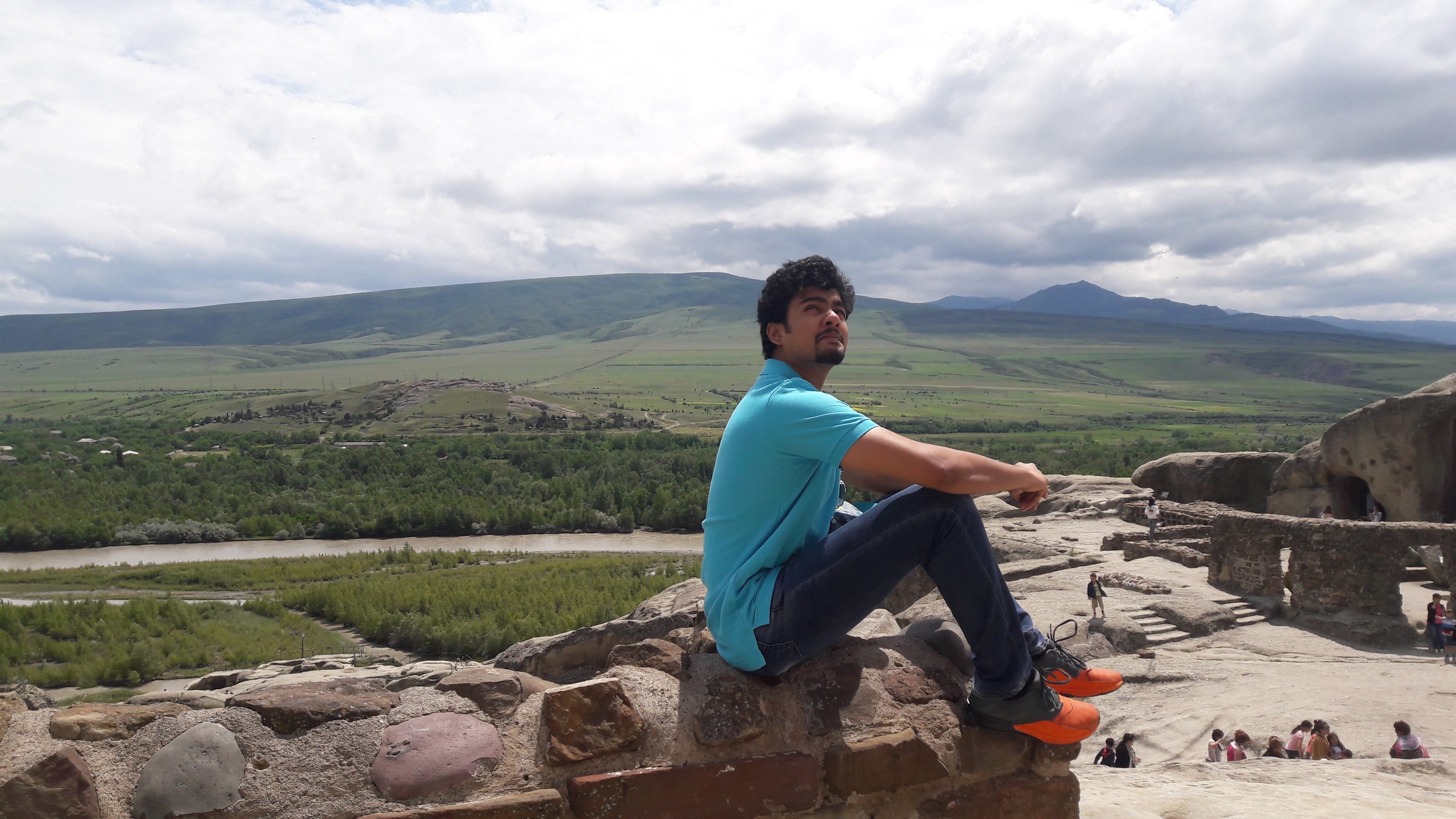
Post that Uplistsikhe was left unattended and the scars of conquests and an earthquake in 1920 can still be seen on the cave town. It stands on the rocky bank of Mtkvari river overlooking the Mtkvari valley.
I remember sitting for an hour just admiring the Christian Basilica & the view of the Mtkvari river and valley. You can see farmers & shepherds carrying out agricultural activities in the valley below the ruins.
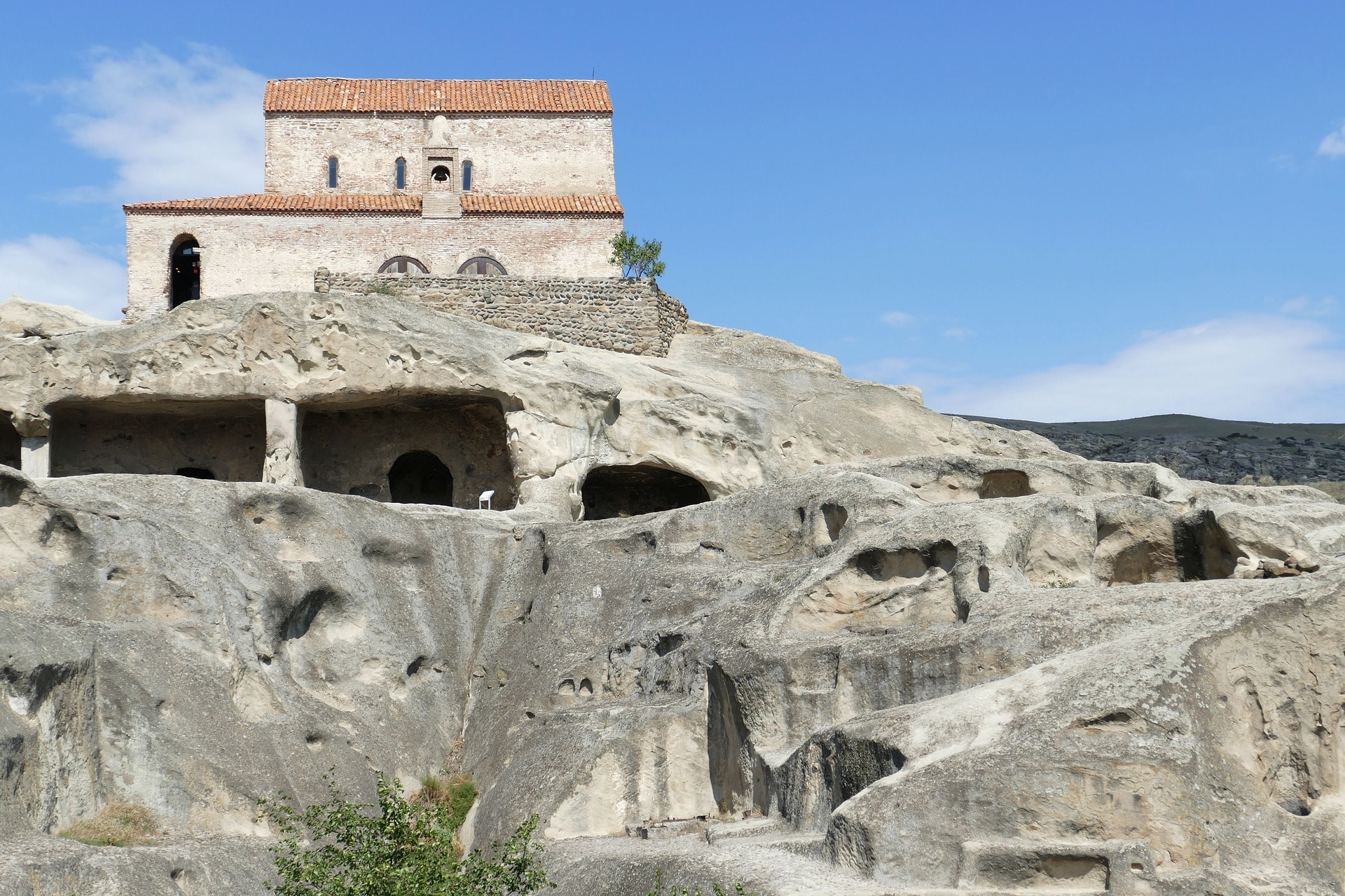
It has an architecture which shows a skillful amalgamation of Paganism & Christianity. At the top of the ruins, you’ll see a Christian Basilica that dates back to the 9th century. It’s open even today and you can enter and experience the place for yourself.
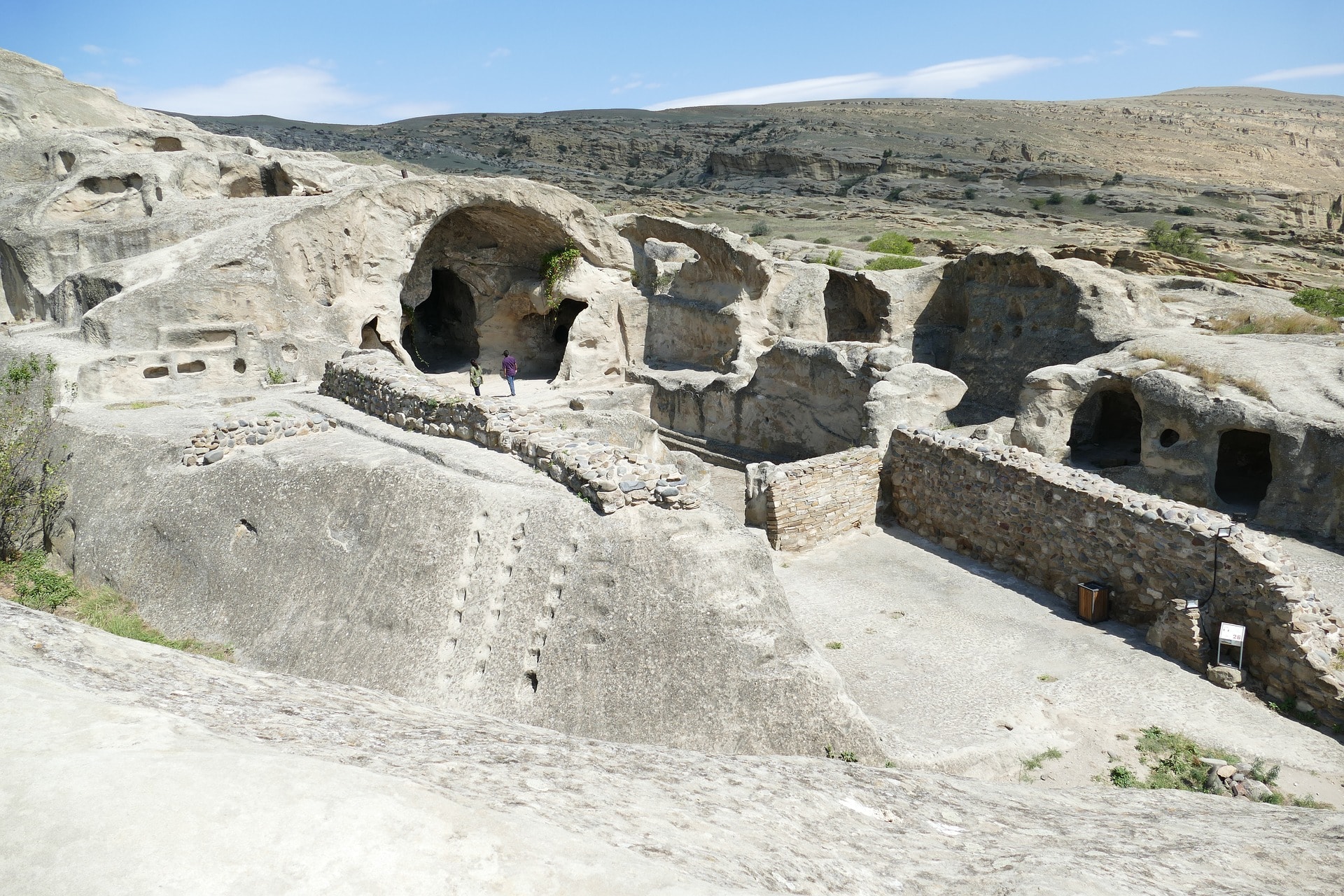
You can easily spend about 2-3 hours exploring the various chambers, holes and rock-cut structures – one of which resembles a human face!
The cave town is 60.8 km from Svetitskhoveli cathedral, 69.7 km from Jvari monastery, 98.9 km to Tbilisi.
NOTE: Entry fees to the cave town is 3 GEL. You can also get an English speaking guide for an extra charge of 20-25 GEL. It’s extremely windy at certain times so don’t let your toddlers roam alone. The next thing that you see flying might resemble your kid.
—-> Book the Mtskheta and Uplistsikhe day trip from Tbilisi by clicking here.
PARTING THOUGHT
So that was my descriptive account to help you formulate a plan to do a day trip from Tbilisi to Mtskheta and Uplistsikhe.
Eastern Georgia is worth exploring and offers you a travel experience that encapsulates the best of art, history, religion & natural beauty. Therefore, giving you an authentic taste of Georgian culture and justifying it’s choice for a day trip from Tbilisi.
SHARE this post with your friends, family, travel-buddy if you’re planning a day-trip from Tbilisi to explore this wonderful country. It’ll not only help you enjoy your travels but also help my blog grow organically.
PICTURE CREDITS
1. Jvari Monastery – courtesy Milan Tvrdy via Creative Commons license, some rights reserved
2. The Holy Cross – from Flickr by Milan Tvrdy
3. Bas-relief structure – from Flickr by Milan Tvrdy
4. Damaged monastery interiors – from Flickr by Milan Tvrdy
5. The monument over Christ’s robe – from Wikimedia Commons by Etan J. Tal
6. Giant fresco of Jesus Christ – from Flickr by Shankar s.
7. Priest preaching a sermon – from Flickr by Shankar s.

1 comment
Such a beautiful country. Thank you for sharing! Your photos are amazing. I would love to go to Georgia one day. Especially the cave town of Uplistsikhe.